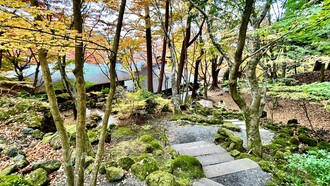The Zoological Garden of Rabat1 invites you to live your dreams of adventure, by going there you will get the chance to see the wild fauna of Morocco, the Sahara and Africa. Here, more than 150 species represented by around 2000 animals living in open spaces simulating their natural habitat so as to favor their adaptation, reproduction, and conservation. This zoological infrastructure is specializing in Moroccan and African fauna that have been spread over 27 ha.
The Zoological Garden of Rabat celebrates on January 9, 2020 its 8th anniversary. Eight years of existence dedicated to its mission of conservation, environmental education, scientific research and entertainment, according to international standards in these areas.
The American travel site Trip Advisor has awarded it the prize of excellence for 3 years (the last in 2018), certifying the quality of the services offered to visitors and because of the positioning of the zoo that is considered as one of the major attractions of the Moroccan capital.
In addition, the Zoological Garden of Rabat has known since its opening the growth of its animal collection which went from 1,200 animals in 2012 to more than 1,900 in 2018 and which has been enriched by more than 700 births representing more than 35 African species. These newly born concern the Atlas lion, the serval, the oryx, the zebra, the gazelles, the flamingo that benefited from the necessary follow-up on the part of the veterinary and nursing team on the food and health plan, to promote their adaptation and integration into their environment.
Rabat Zoological Garden: Birth of 150 animals
More than 150 animals were born at the National Zoological Garden of Rabat during 2019, among them endangered species. These include a zebra, nine addaxes, eight cuff sheep, eight servals, eight dorcas gazelles, eight bald ibis, five scimitar Oryx, a dama gazelle and several other endangered species.
The newborns benefited from an appropriate medical follow-up and a period of veterinary surveillance in order to allow them takes their first steps in their new environment and to favor their adaptation and their integration within their groups of congeners.
The births registered are the result of the actions carried out by the Zoological Garden of Rabat to ensure the reproduction of the species, within the framework of a collection plan aiming at the conservation of the wild fauna according to the standards in force in international zoos.
In this regard, a conservation program has been put in place for endemic species of Morocco, notably Sahelo-Saharan antelopes or bald ibis, with the aim of building viable populations of these animals, with a view to their reintroduction into their original environment, from where they disappeared.
The Zoological Garden of Rabat harbors around 2000 animals representing 150 species among the three animal classes most commonly found in zoological parks, such as birds, mammals and reptiles, making this zoo an area for the conservation of wild species par excellence.
The vivarium of the National Zoological Garden of Rabat highlights awareness of African biological diversity
Built on 1,700 m2, the vivarium is home to more than 150 animal species representing 46 species of reptiles, including snakes, crocodiles and turtles, and their biotopes that range from Morocco to Madagascar.
The various spaces of the vivarium are gathering some species of living reptiles from different regions of Africa, from Morocco Zone, the South Saharan Zone, the Afro-Alpine Zone, the Equatorial Zone, the Subtropical Zone and the Madagascan Zone.
The main role of this space is to present the great biological diversity of the African continent and its specificities and to awaken the ecological conscience of citizens.
This space allows visitors to browse the representations of the different geographical areas of the African continent as part of a didactic and fun visit. The concept developed respects the principle of immersion and geographical presentation of the main ecosystems of Africa, in harmony with the general concept of the Zoological Garden of Rabat.
The structure which also tends to disseminate knowledge on the richness of the biodiversity of Morocco and the African continent in this area, in particular those threatened by the effects of climate change, noting that this new space designed according to international standards is considered among the three most visited sites in the capital.
The vivarium of the National Zoological Garden of Rabat, whose inauguration ceremony was chaired last December by Her Royal Highness Princess Lalla Khadija, will raise awareness of biological diversity and the preservation of the ecosystem.
1 Rabat zoo and its vivarium are open seven days a week from Monday to Sunday, from 10 a.m. to 5.30 p.m. the price package for adult is 50 dh (5 Euros) a day, 40 dh a half-day, and for children (from 3 to 12 years old) is 30 dh a day, 20 dh a half-day, and it is free from children under three years old.















